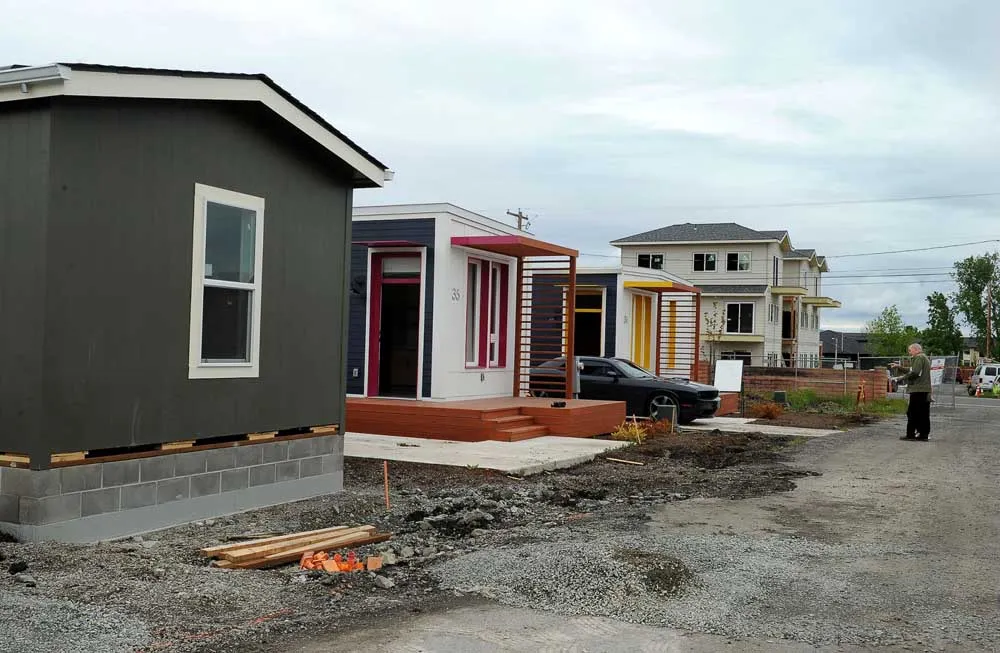MADRAS, Ore. – In the high desert of central Oregon, extreme heat and cold are part of daily life. But for many residents of mobile home parks in Madras, staying safe during these swings in temperature is far from guaranteed.
The city has eight manufactured dwelling parks with a total of 276 spaces, according to Oregon’s directory. Many of the homes are decades old, built before modern energy standards, and lack proper heating, cooling, or insulation.
Life in Outdated Homes
For Shawn King, who lived in a 50-year-old mobile home until 2024, summers were unbearable.
Also Read
“It was miserable,” she recalled. King cooked meals outside on a portable stove to avoid overheating the house. In winter, she covered her windows with bubble wrap to keep ice from forming inside.
Her husband Brian, who is disabled, struggled to move around in the cramped, overheated space. “I dreaded the summers,” King said.
These conditions can be dangerous. During the 2021 “heat dome” that killed more than 100 Oregonians, about 20% of the deaths were residents of mobile home parks. That year, temperatures in Madras reached 109 degrees.
A Widespread Issue
Manufactured housing makes up about 15% of the rural housing stock nationwide, according to the U.S. Department of Housing and Urban Development (HUD)—double the share of urban areas. Roughly one-fifth of all manufactured homes were built before 1976, when national building codes were introduced.
Older models are notoriously inefficient, prone to mold, poor insulation, and inadequate ventilation—problems that are magnified as climate change brings longer and more intense heat waves.
Energy Trust’s Replacement Program
One Oregon nonprofit is trying to change that. The Energy Trust of Oregon operates a manufactured home replacement program that helps residents replace outdated homes with energy-efficient models built after 1995.
The program offers up to $16,000 in assistance, connects families with partner organizations, and assigns each applicant a navigator to guide them through funding, permitting, and installation.
“Sometimes people will have their own capital, or borrow some, and then get other grants,” said Scott Leonard, a senior project manager at Energy Trust. “That’s where the navigator role comes in—because it’s challenging to figure all that out.”
The Kings applied in 2023 and moved into their new home in March 2024. The project cost about $120,000, including an ADA ramp and carport. Their share was $6,000, covered by savings and a low-interest loan from nonprofit lender Craft3.
Their new home includes a heat pump, lowering utility bills and improving comfort. “It’s very uplifting to your mood and how you feel,” King said. “When you’re low-income, it really means a lot to be able to own your own home.”
Progress and Limits
Since piloting the program in 2018, Energy Trust has helped more than 100 Oregon families replace unsafe mobile homes. But the need is far greater. Manufactured homes account for 10% of Oregon’s housing, and about 60% were built before energy efficiency standards were enforced.
“We still have a lot of work to do… but we’re ready to do it,” said Eddie Sepeda, a program navigator for Energy Trust.
Lessons From Arizona
The problem is not unique to Oregon. In Arizona, where extreme heat has long been a public health crisis, mobile home residents are six to eight times more likely to die during heat waves, according to Patricia Solís, a researcher at Arizona State University.
Solís estimates that 175,000 older mobile homes in the state need major weatherization, but programs like LIHEAP (Low Income Home Energy Assistance Program) and the federal Weatherization Assistance Program reach only about 10,000 households per year.
She advocates pairing housing upgrades with climate adaptation. “If we want to solve the heat problem, why don’t we solve the housing problem at the same time?” she said.
An Uncertain Policy Future
While nonprofits continue to push for solutions, federal support is at risk. Several Biden-era green energy initiatives under the Inflation Reduction Act have been paused for review by the Trump administration. The White House’s proposed 2026 budget also eliminates LIHEAP, a lifeline for many low-income mobile home residents.
If that happens, nonprofits like Energy Trust may face even more pressure to fill the gap.
Building Resilience
For now, residents like the Kings show what’s possible when outdated homes are replaced with safer, more efficient housing. Their story underscores both the urgency and the opportunity: pairing affordable housing needs with climate adaptation.
As Solís put it, “We need more affordable housing in this country. We need climate adaptation in this country. Why don’t we put problem A with problem B together, and create resilient solutions all around?”












